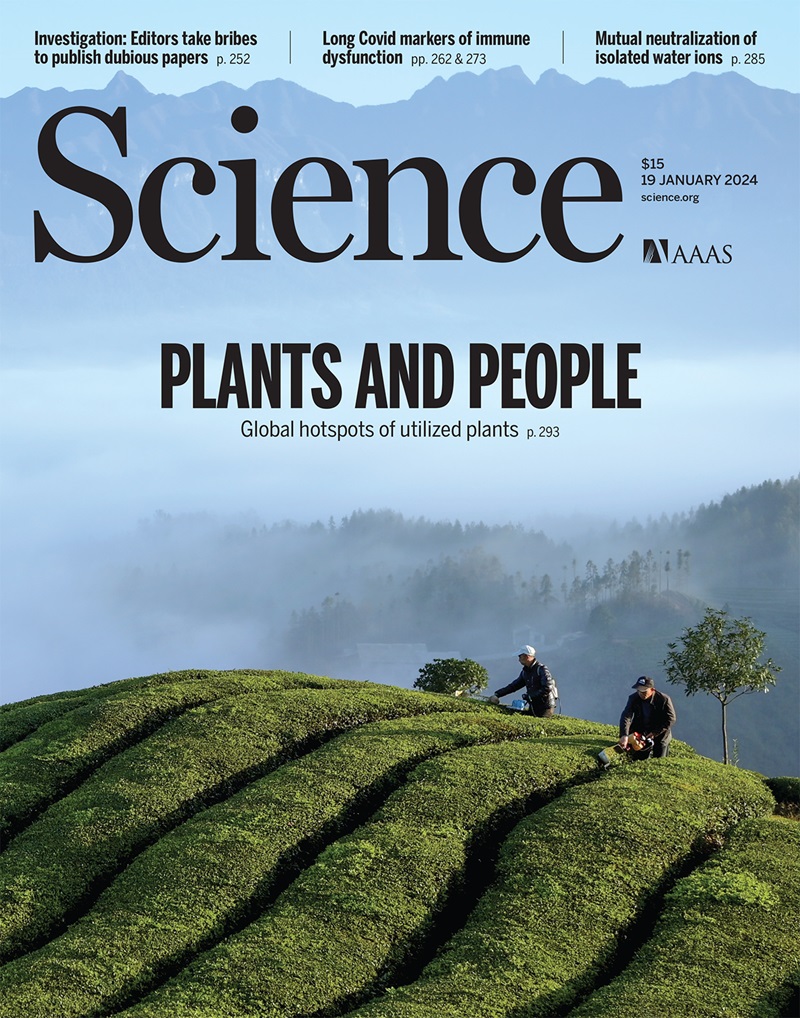Long-term stability in perovskite solar cells through atomic layer deposition of tin oxide
IF 44.7
1区 综合性期刊
Q1 MULTIDISCIPLINARY SCIENCES
引用次数: 0
Abstract
Robust contact schemes that boost stability and simplify the production process are needed for perovskite solar cells (PSCs). We codeposited perovskite and hole-selective contact while protecting the perovskite to enable deposition of SnOx/Ag without the use of a fullerene. The SnOx, prepared through atomic layer deposition, serves as a durable inorganic electron transport layer. Tailoring the oxygen vacancy defects in the SnOx layer led to power conversion efficiencies (PCEs) of >25%. Our devices exhibit superior stability over conventional p-i-n PSCs, successfully meeting several benchmark stability tests. They retained >95% PCE after 2000 hours of continuous operation at their maximum power point under simulated AM1.5 illumination at 65°C. Additionally, they boast a certified T97 lifetime exceeding 1000 hours.
通过氧化锡原子层沉积实现过氧化物太阳能电池的长期稳定性。
过氧化物太阳能电池(PSC)需要既能提高稳定性又能简化生产工艺的可靠接触方案。我们在保护包晶的同时共沉积了包晶和空穴选择性接触,从而在不使用富勒烯的情况下实现了氧化锡/银的沉积。通过原子层沉积制备的氧化锡可作为持久的无机电子传输层。调整氧化锡层中的氧空位缺陷可使功率转换效率(PCE)大于 25%。与传统的 pi-n PSC 相比,我们的器件具有更高的稳定性,成功通过了多项基准稳定性测试。在 65°C 的模拟 AM1.5 照明条件下,器件在最大功率点连续工作 2000 小时后,PCE 仍保持在 95% 以上。此外,它们经认证的 T97 寿命超过 1000 小时。
本文章由计算机程序翻译,如有差异,请以英文原文为准。
求助全文
约1分钟内获得全文
求助全文
来源期刊

Science
综合性期刊-综合性期刊
CiteScore
61.10
自引率
0.90%
发文量
0
审稿时长
2.1 months
期刊介绍:
Science is a leading outlet for scientific news, commentary, and cutting-edge research. Through its print and online incarnations, Science reaches an estimated worldwide readership of more than one million. Science’s authorship is global too, and its articles consistently rank among the world's most cited research.
Science serves as a forum for discussion of important issues related to the advancement of science by publishing material on which a consensus has been reached as well as including the presentation of minority or conflicting points of view. Accordingly, all articles published in Science—including editorials, news and comment, and book reviews—are signed and reflect the individual views of the authors and not official points of view adopted by AAAS or the institutions with which the authors are affiliated.
Science seeks to publish those papers that are most influential in their fields or across fields and that will significantly advance scientific understanding. Selected papers should present novel and broadly important data, syntheses, or concepts. They should merit recognition by the wider scientific community and general public provided by publication in Science, beyond that provided by specialty journals. Science welcomes submissions from all fields of science and from any source. The editors are committed to the prompt evaluation and publication of submitted papers while upholding high standards that support reproducibility of published research. Science is published weekly; selected papers are published online ahead of print.
 求助内容:
求助内容: 应助结果提醒方式:
应助结果提醒方式:


